Without a doubt, visiting Sobibór extermination camp museum and memorial will give you a much wider understanding of the camp’s history and what went on here. It’s not enough to just know that Sobibór was one of the six Nazi extermination camps; you need to experience this place for yourself.
Of the six Nazi death camps in Poland, the Sobibór museum feels the most eerily remote. It’s also the newest, opening as recently as October 2020. This quick guide will tell you everything you need to know in order to plan your own visit to the Sobibór extermination camp museum and memorial.
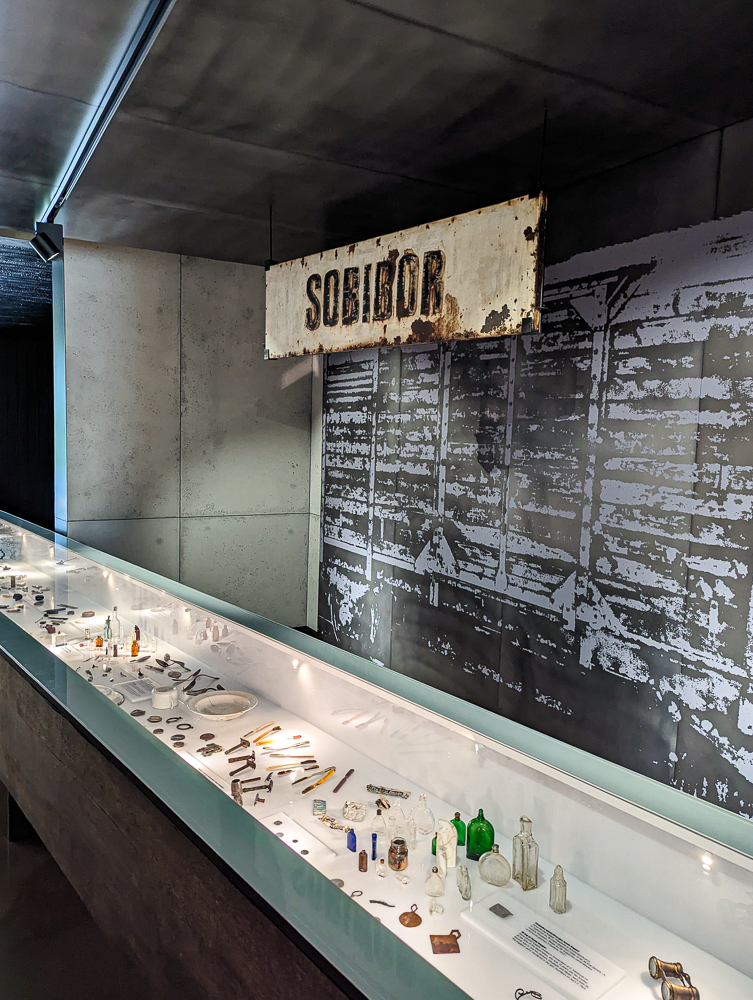
What is Sobibór?
Along with Auschwitz, Belzec, Chełmno, Majdanek, and Treblinka, Sobibór was one of the six major Nazi death camps during the Holocaust. It was a killing center established specifically for the extermination of Polish Jews as part of Operation Reinhard and the Nazi’s “Final Solution to the Jewish Question.”
The camp was divided into three sections: an administrative section, a reception area, and the killing section. The administrative area housed the SS guards as well as the Jewish forced laborers. The reception area was where Jews would disembark the trains, undress, and hand over their belongings. The killing area is where they would head next—where the gas chambers and burial pits were located.
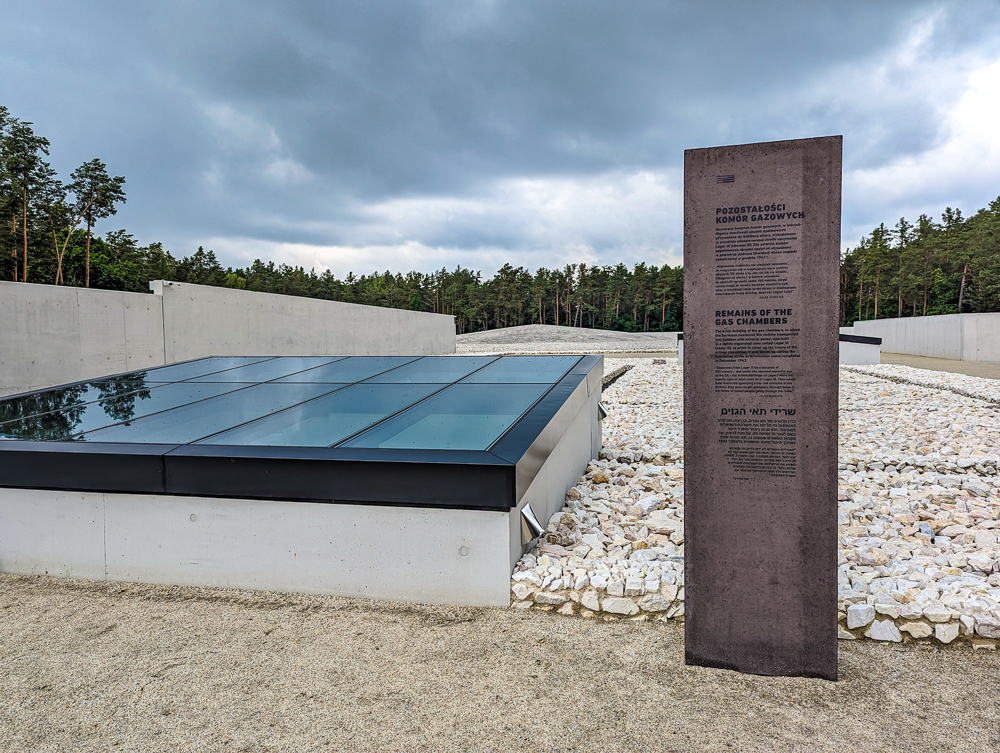
Sobibór as a killing center
The extermination camp at Sobibór operated from May 1942 until October 1943. It was the second camp to open after Belzec. In that time, the SS murdered 180,000 Jews here. More than half of them were Polish Jews, the rest from other German-occupied countries throughout Europe. Like Belzec, the preferred method of killing was the use of gas chambers and carbon monoxide gas produced from engine exhaust.
As was common at the extermination camps, the victims’ bodies were initially buried. When that proved inefficient, they were then exhumed and burned out in the open on “grills” made from railroad tracks instead. I shudder to even type those words.
Some Jews who arrived and appeared relatively fit however were plucked from the transports and kept as forced labor. Some also became Sonderkommandos—Jewish prisoners forced to assist in the killings and disposal of other Jews. To keep the truth of what happened here a secret, sonderkommandos were regularly killed themselves and replaced with new arrivals.
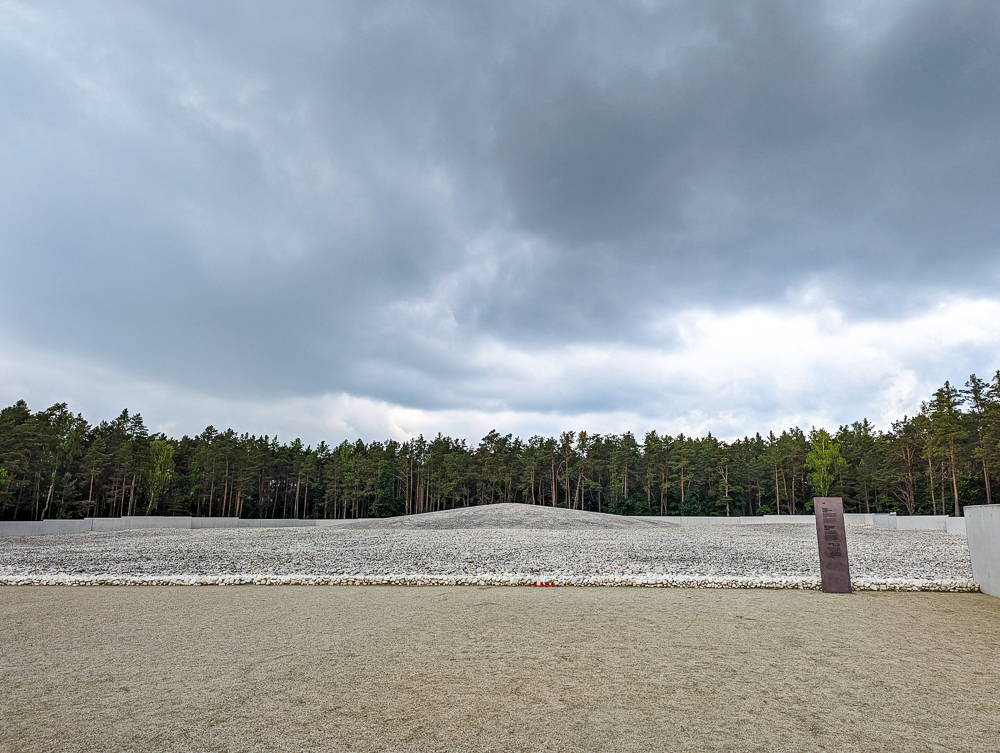
Sobibór uprisings
The one thing that stood out to me the most when visiting Sobibór was the level of active resistance shown here—more than anywhere else I’ve been or read about. Some forms were simple, like destroying their personal belongings before handing them over. Others were more daring, like physically attacking their guards or attempting to escape. And still others were about as bold as one could get—forming organized resistance groups and staging armed revolts.
There were multiple escape attempts throughout Sobibór’s run—some successful, some tragic. And then there was the October 1943 Sobibór uprising.
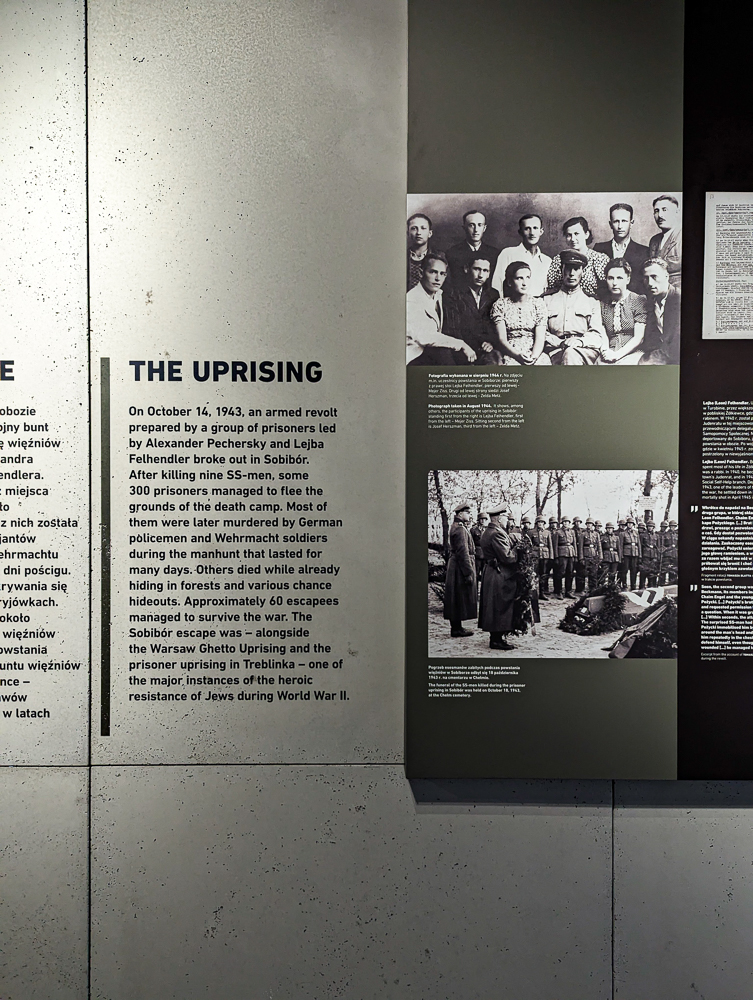
Having heard about the liquidation of prisoners at Belzec and fearing the same was about to happen at Sobibór, the prisoners formed an underground resistance committee. The purpose: to stage a revolt that gave all involved at least a small chance of escape. The leaders: Leon Felhendler and Alexander Peczersky.
On October 14, 1943, Felhendler and Peczersky led an armed revolt at the camp. Nine SS men were killed and 300 Jewish prisoners escaped the camp. Of those 300, only 60 managed to survive until the end of the war. Most others were tracked down and killed within days of escape and others died while hiding in the woods. Along with the Warsaw Uprising, this is marked as one of WWII’s major instances of heroic resistance.
See my full 2-week Poland WWII itinerary here.
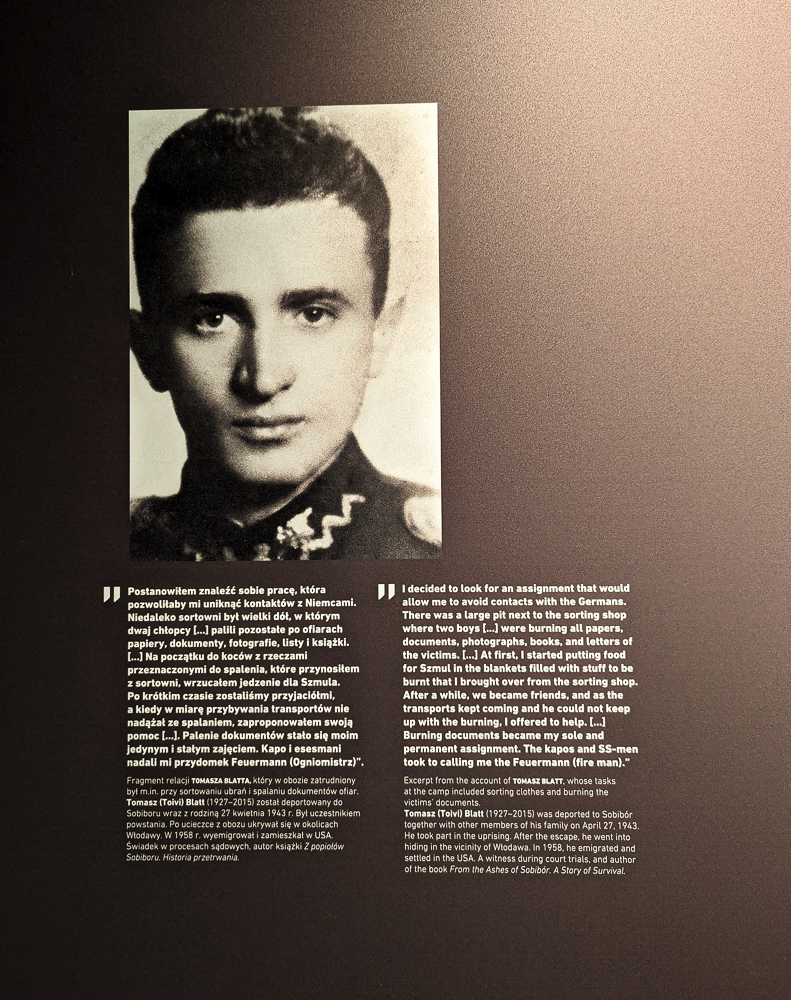
Sobibór after the war
Following the revolt, the SS did decide to liquidate the camp and destroy all evidence of its existence. They had the gas chambers and other camp buildings dismantled, then shot all remaining prisoners. Following the example set at Belzec, the camp grounds were then plowed over and planted with pine trees to disguise the fact that anything sinister had ever happened here.
And for a long time, that worked. For the first 20 years following the war, the memory of this site all but vanished into obscurity. For decades, grave robbers plundered the area. Hoping to find some of the stolen personal property, they unearthed only ashes and human remains. It wasn’t until the 1960s when the first thoughts of memorializing the site took shape. Even still, hardly any evidence of its operation existed.
However, in 2020, the descendants of Johann Niemann–the camp’s deputy commandant–donated a large collection of previously unknown photos to the United States Holocaust Memorial Museum in Washington, D.C. These images offer rare views of the former camp and insight into the lives of its personnel.
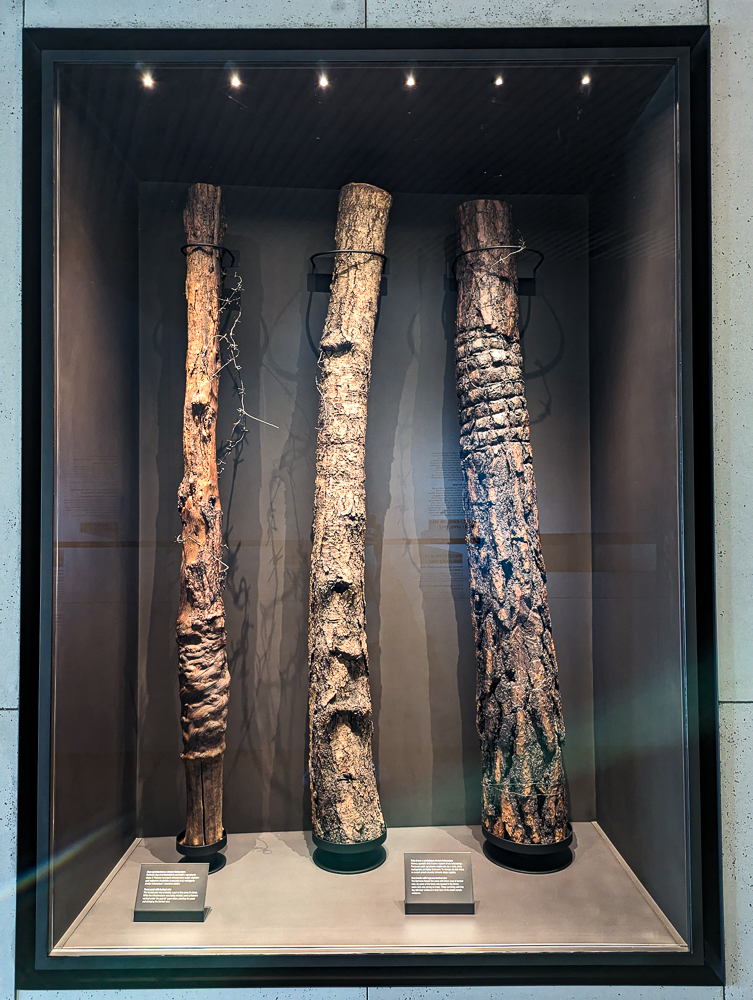
Sobibór today
Visiting Sobibór today is an eerie experience. You can get a good idea as to the size of the camp and why this SS chose this location. It’s still very much hidden in the woods, surrounded by tall pine trees that moan and groan in the wind.
As of October 2020, there’s now a beautiful new museum here. You can learn all about the history of the camp and its extraordinarily brave prisoners. It contains tons of information (in both Polish and English) and houses a fantastic collection of artifacts from the camp. Behind it, there’s a walking trail on which you can visit several memorials and many parts of the former camp.
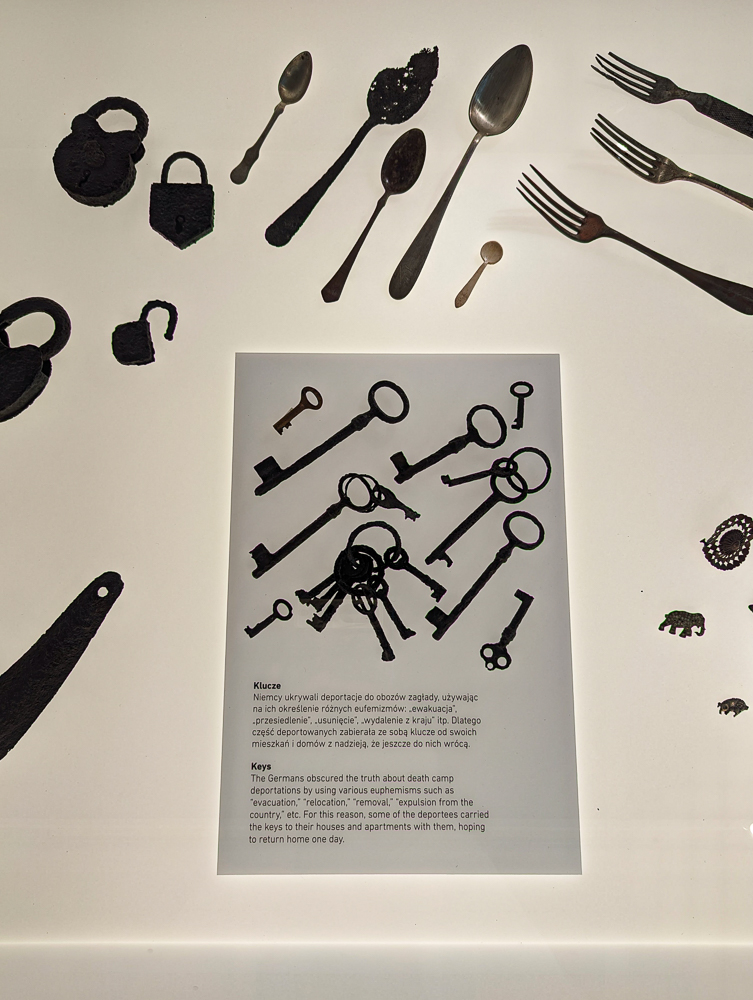
Why visit Sobibór?
Unlike some former camps like Auschwitz and Majdanek, there aren’t any original camp structures to see here. Even so, what you can see and learn about in the museum is worth the visit.
Regardless, one reason everyone should visit is to bear witness. The Nazi regime tried very hard to rid the world of these people and then did everything it could to cover up its crimes. These victims and what happened here could easily have vanished from history.
I feel we owe it to Sobibór’s victims to learn about their experiences, what they endured here, and how hard they fought to resist. And, to stick it to those who thought they could get away with it. There will never be a befitting punishment for these heinous crimes, but it’s important to say We see you and We know what you did. If for no other reason, visit Sobibór so that what happened here won’t be forgotten.
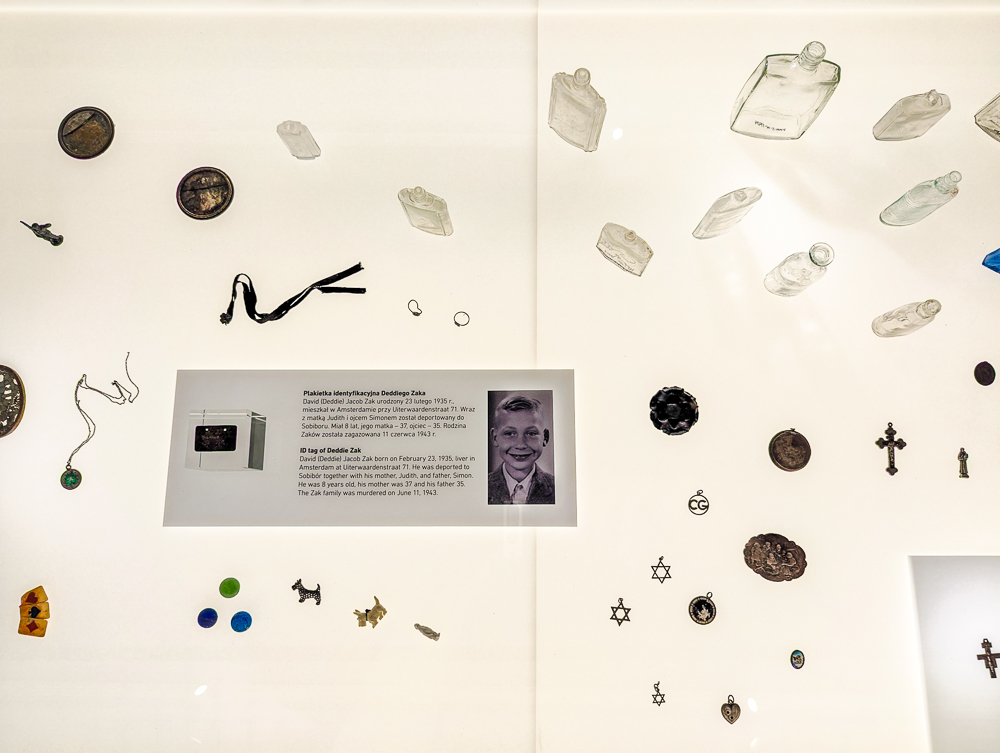
Where is Sobibór extermination camp?
Sobibór extermination camp museum and memorial is located in southeastern Poland near the town of Stacja Kolejowa Sobibór, about 3 miles from the border with Ukraine.
How to get to Sobibór
Given its extremely remote location, driving to Sobibór is going to be your best bet. (Rent a car here if you need to.) The Sobibór museum site is a:
- 1 hour 20-minute drive from Lublin (and the Majdanek concentration camp)
- 1.5-hour drive from Zamość
- 2.25-hour drive from Belzec extermination camp
- 3-hour drive from Warsaw
GPS address: Żłobek 101, 22-200 Włodawa, Poland
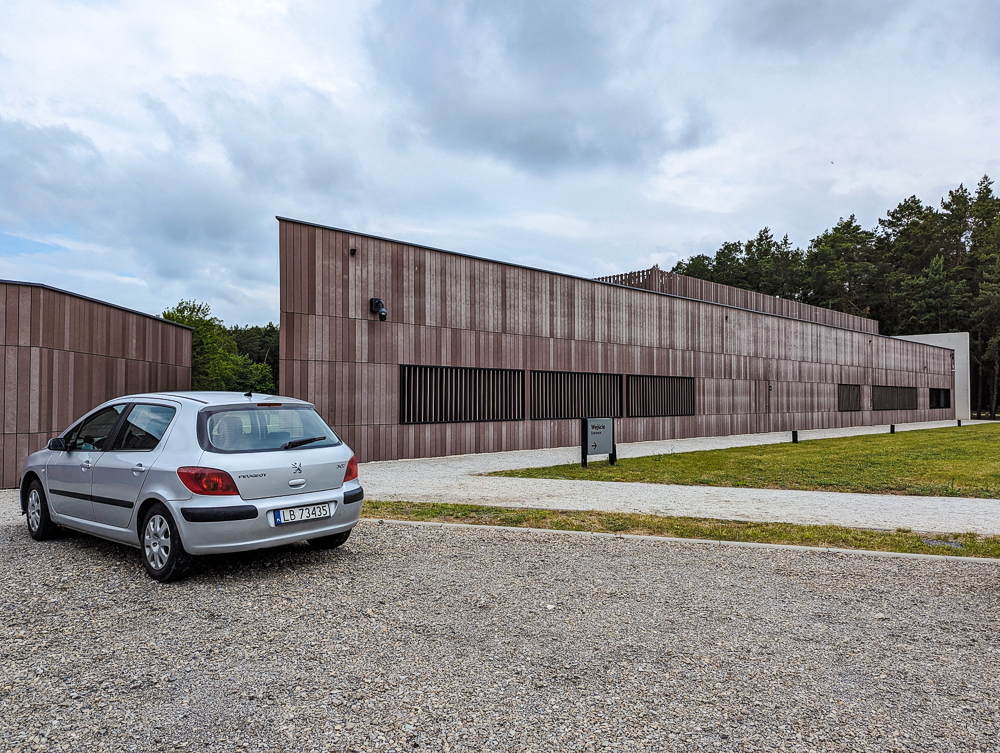
To get here, you’ll drive a considerable distance through rural countryside and old forests, with very little civilization in between. (So be sure to fill up before you head this way! Your gas tank and your stomach, that is.) Once here, you’ll find a large parking area directly in front of the new museum. Parking here is free.
Also read: Driving in Poland: What You Need to Know Before You Hit the Road
Visiting Sobibór by tour
Again, Sobibór is pretty remote so there aren’t many tour companies that will take you here. But, Poland Travel does offer a Lublin to Sobibór guided day tour you can check out. (I don’t have any personal experience with this company, but they offer day tours to Poland’s extermination camps which no other company does.)
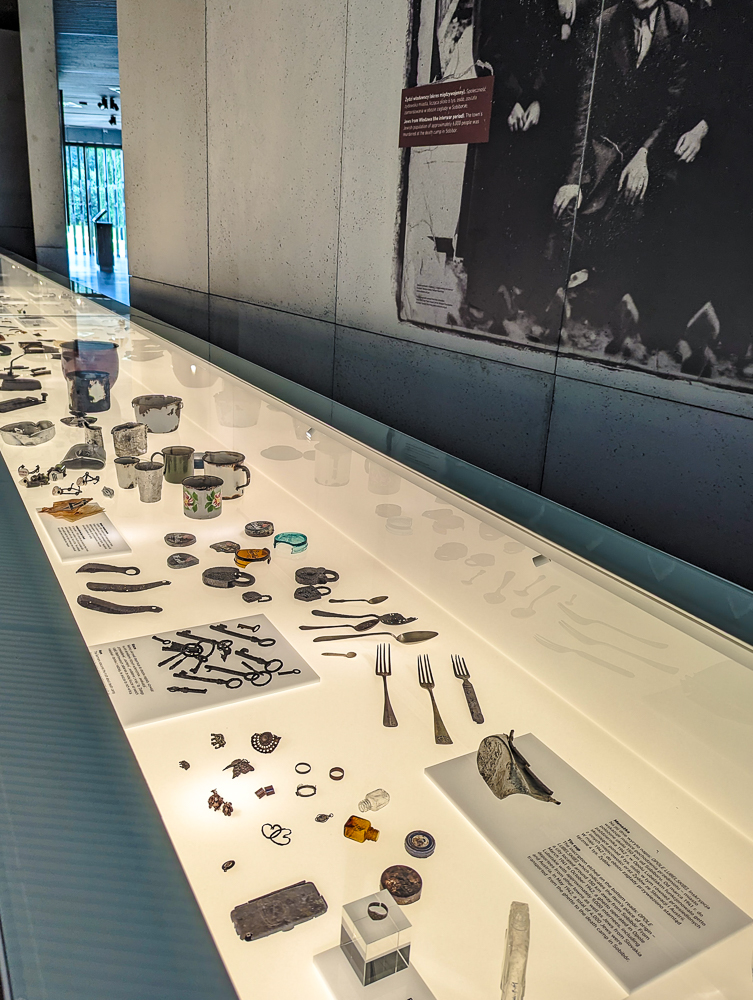
What you can see at Sobibór extermination camp
Visiting Sobibór, you’ll be able to check out the new museum’s permanent collection, several memorials, and the remains of some of the camp’s original footprint.
Sobibór Museum
The new Sobibór Museum opened in October 2020 and is really impressive. The displays take you through the camp’s history and showcase many interesting (and heart-breaking) artifacts recovered here. There’s also a considerable focus on the camp’s victims and the many acts of resistance that defined this place.
Informative panels contain both Polish and English. Along the way, you can also collect small cards with a summary of information on them to take with you. (Polish on one side, English on the other.) You can find these in the wooden drawers on the walls (see below for example).
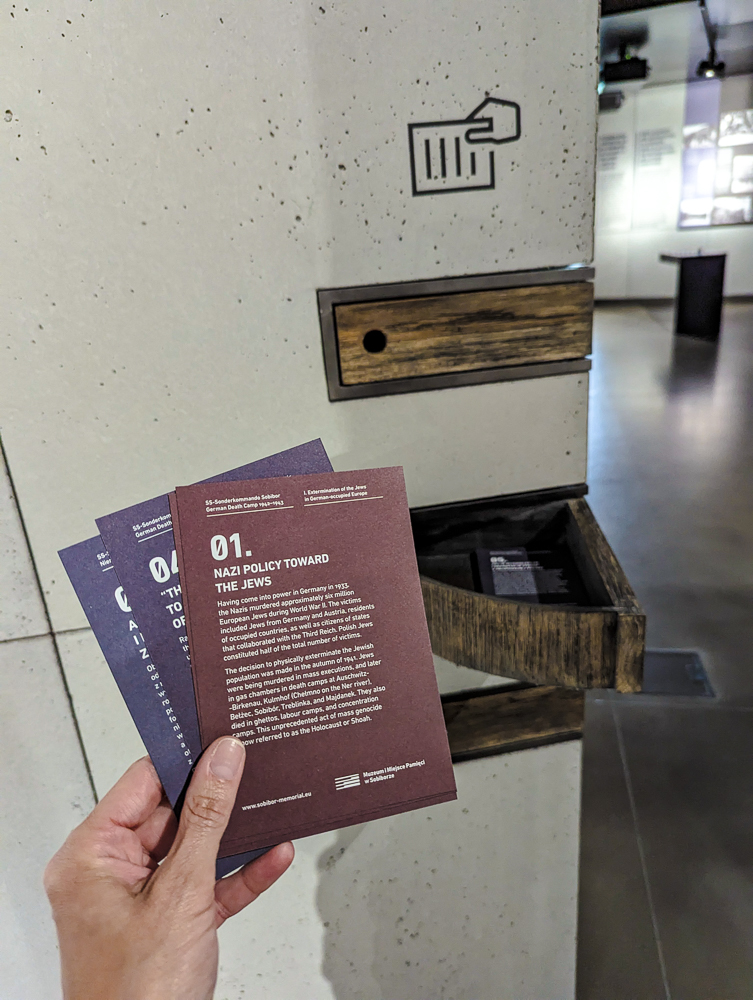
Sobibór memorials
At Sobibór, you can see several memorials such as the Wall of Remembrance and the statue of a mother embracing her child. This was created by sculptor Mieczysław Welter and was part of the site’s original commemoration in 1965.
Trail of Memory
Outside the museum, past the memorials, you’ll find yourself on the camp’s Trail of Memory. This walking trail follows the path of the former camp’s Schlauch, otherwise known as “the tube”–the path taken by the prisoners on their way to the gas chambers.
Today, this paved path takes you from the museum to various locations like the former site of the prisoner barracks, the remains of the gas chambers, the residential barracks of the Sonderkommandos, and more. At the end, you’ll arrive at the mass grave site—a large mound containing the ashes and remains of camp victims.
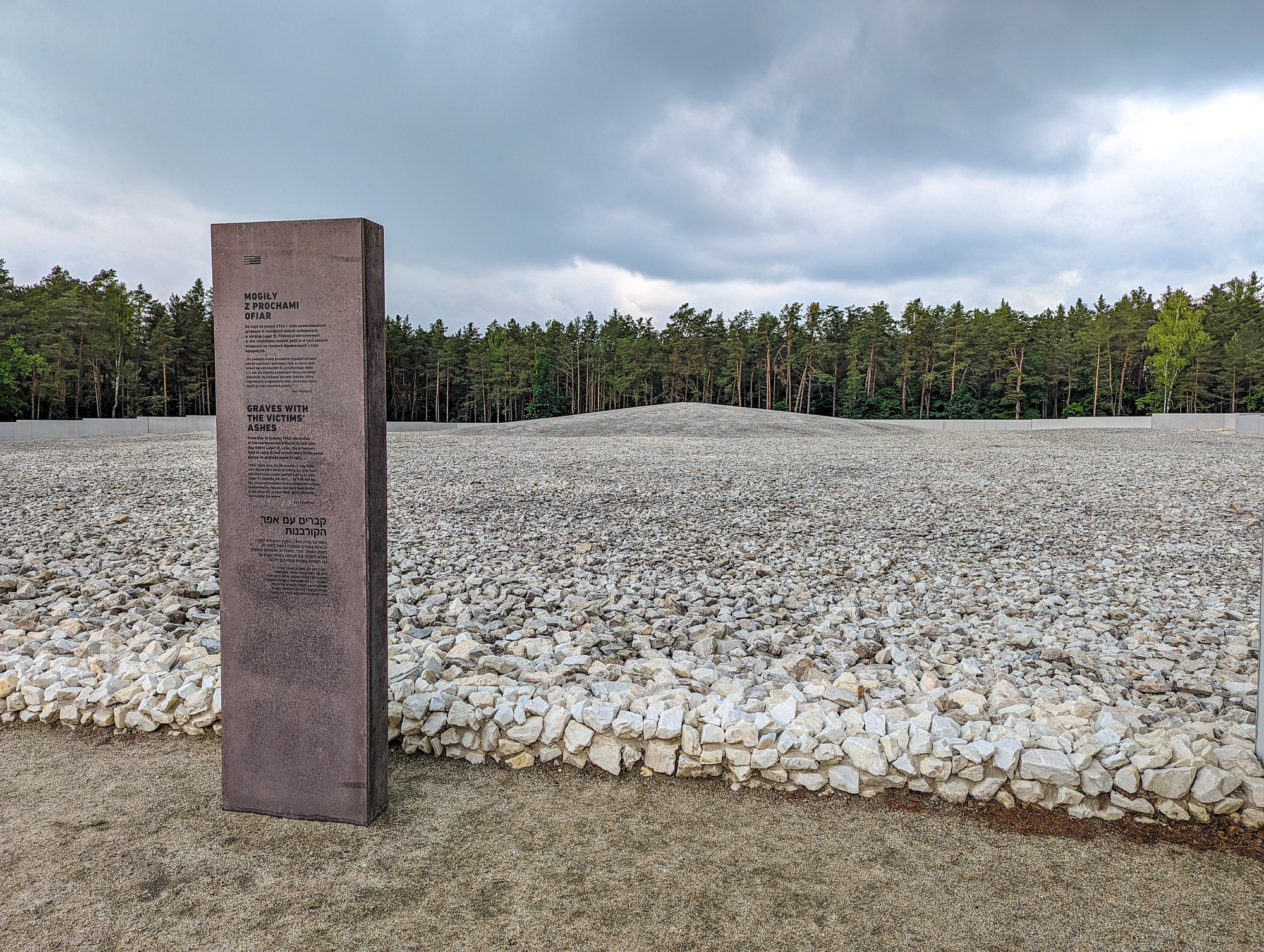
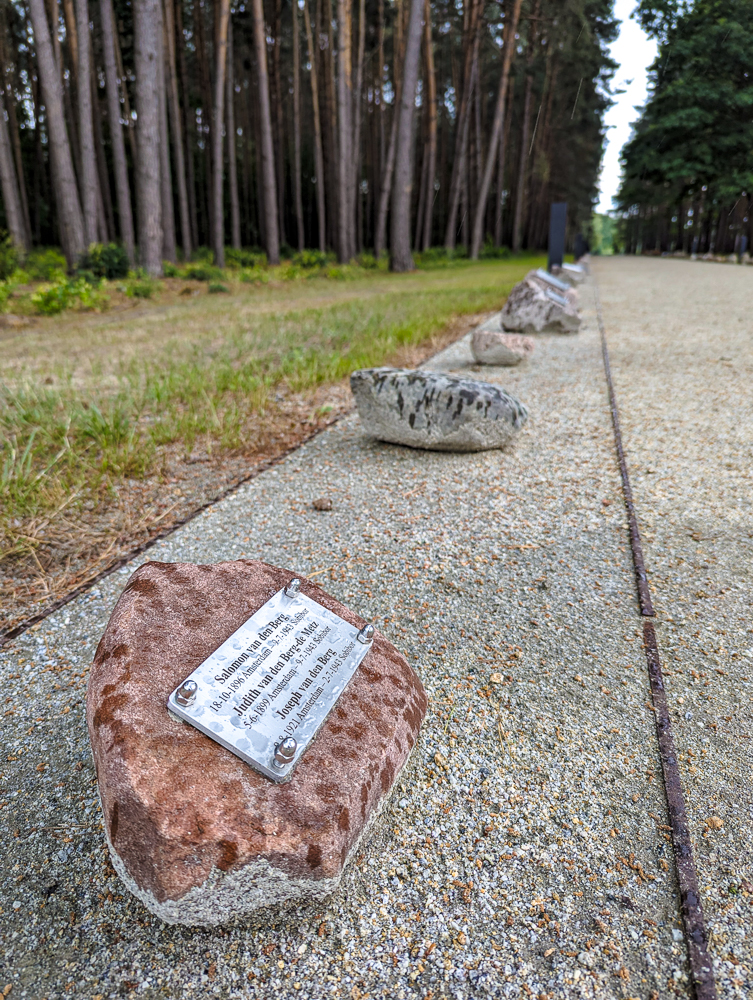
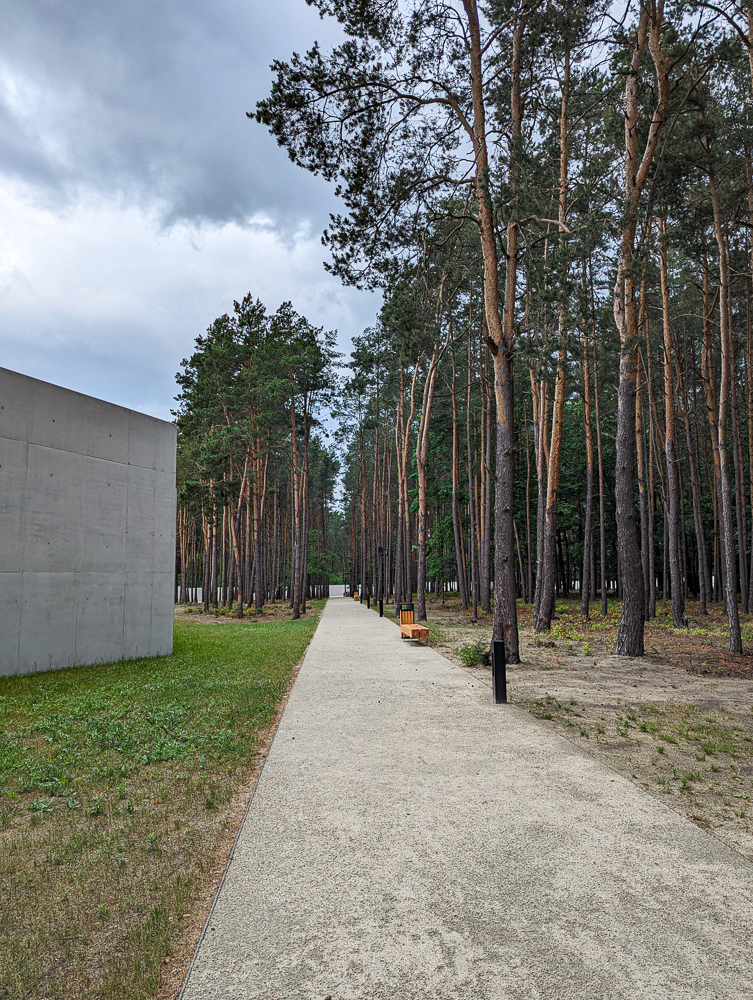
Visiting Sobibór: What to expect
After parking, make your way into the main visitor center entrance. In here you can pay for parking (if necessary), pick up a map of the former camp, and get any additional information you need.
From here, you’ll enter the museum where you’re free to explore at your own pace. Take your time, read all the displays, and don’t miss the free information cards in the wooden drawers.
After you’ve made it through the museum, head outside towards the Trail of Memory. This will take you from the museum to the grave mound, past former camp locations, beneath the tall pine trees.
When you’re finished here, you can head straight back to your car without having to return to the visitor center (unless you want more information or have questions).
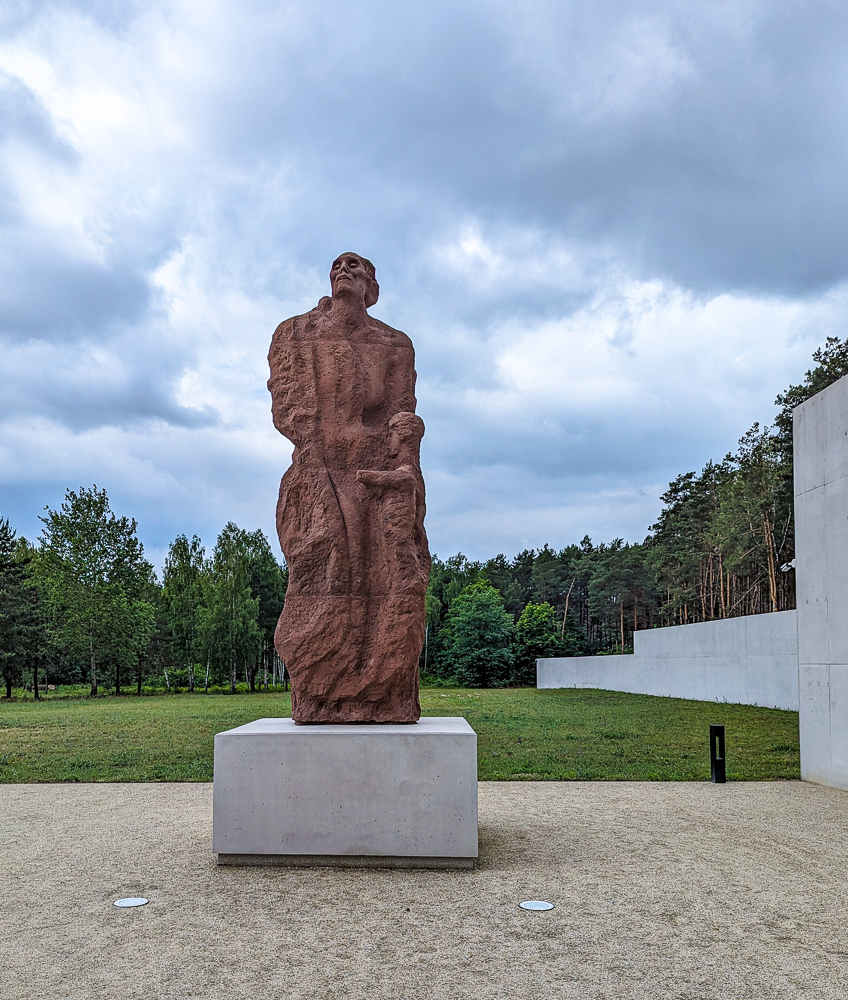
What you need to know for visiting Sobibór
With the information above, visiting Sobibór is pretty straightforward. Regardless, here are a few things worth knowing ahead of time:
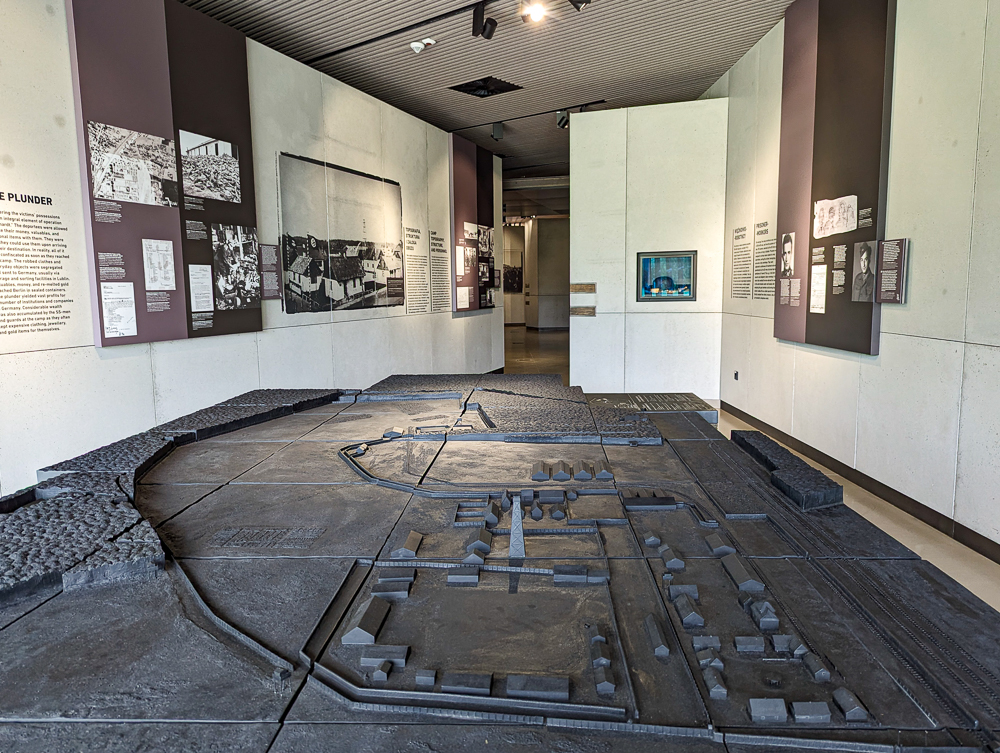
How to act at Sobibór
Hopefully you won’t see any inappropriate behavior while visiting Sobibór like I’ve seen at many camps and historical sites. Even so, here are a few simple rules to follow yourself while here:
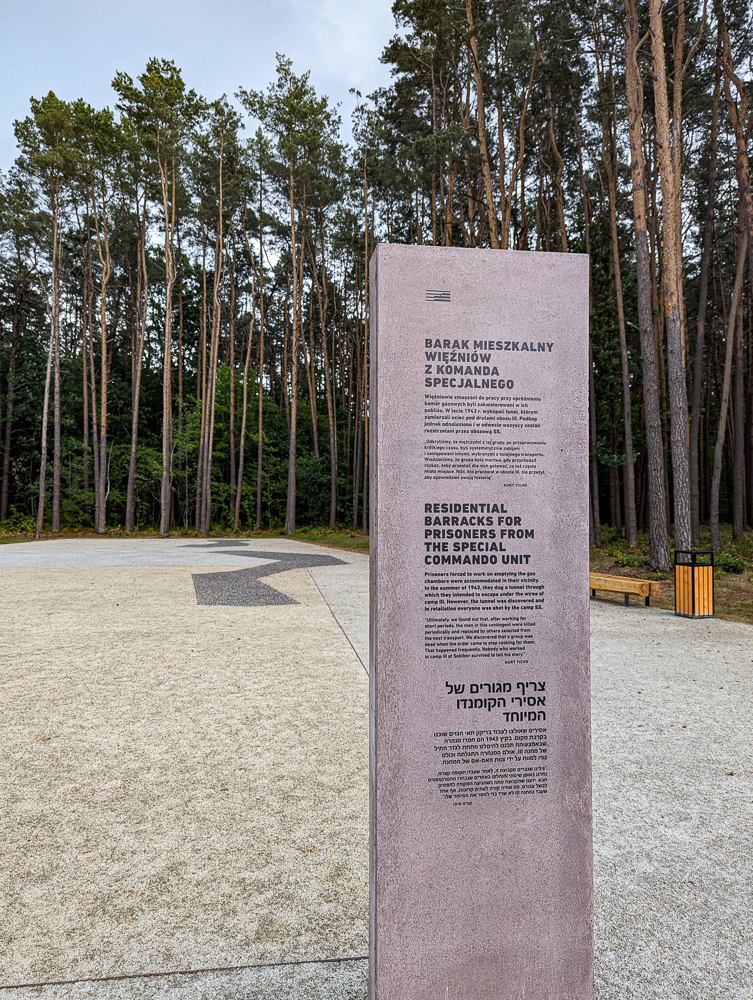
Visiting Sobibór: Essential information
Here’s all the necessary visitor information you need to plan your trip to Sobibór (accurate as of February 2025):
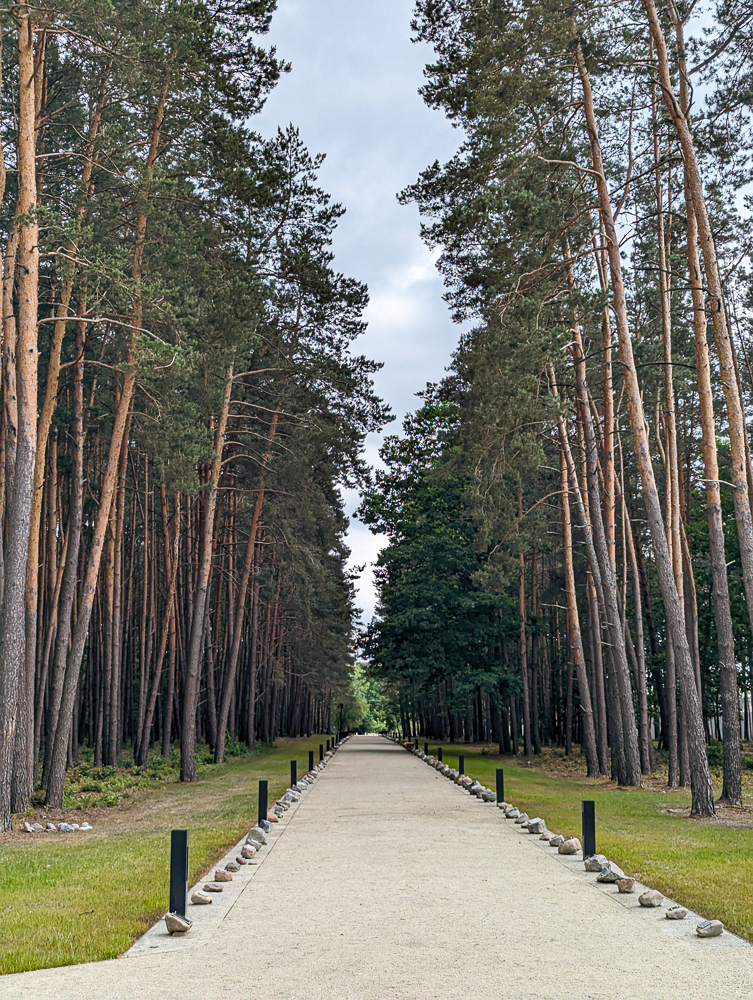
Suggested books for visiting Sobibór
Here are a few great books you can read to prepare for visiting Sobibór:
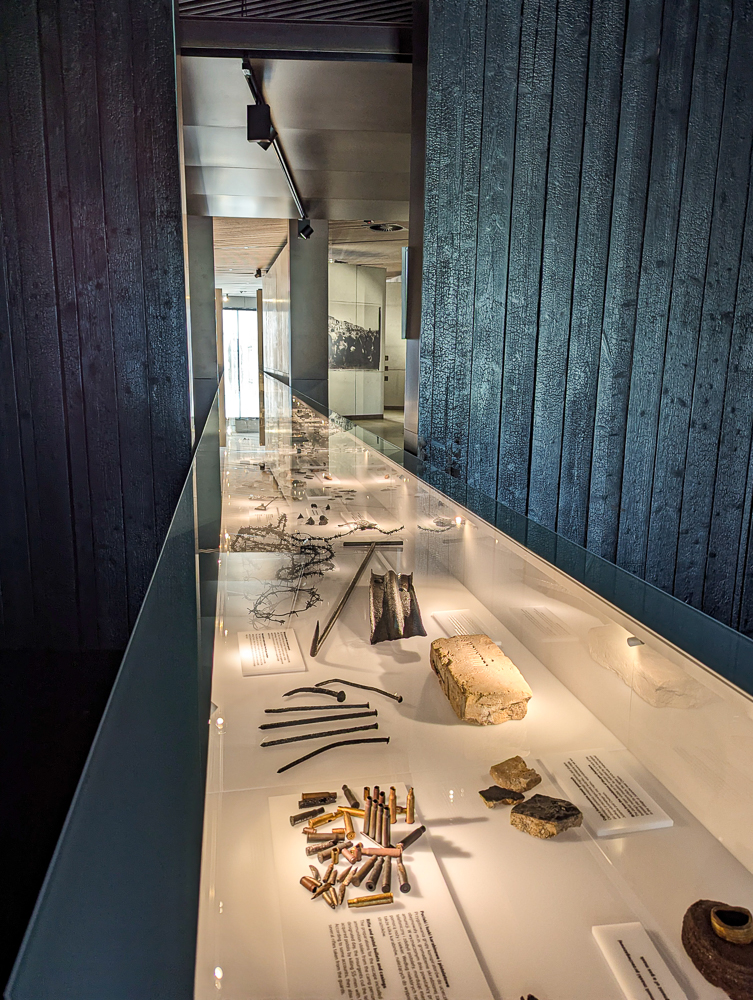
Suggested movies and TV shows for visiting Sobibór
Here are a few great movies you can watch to prepare for visiting Sobibór:
For more great books to read and movies to watch before visiting Poland, see my full list in that link.
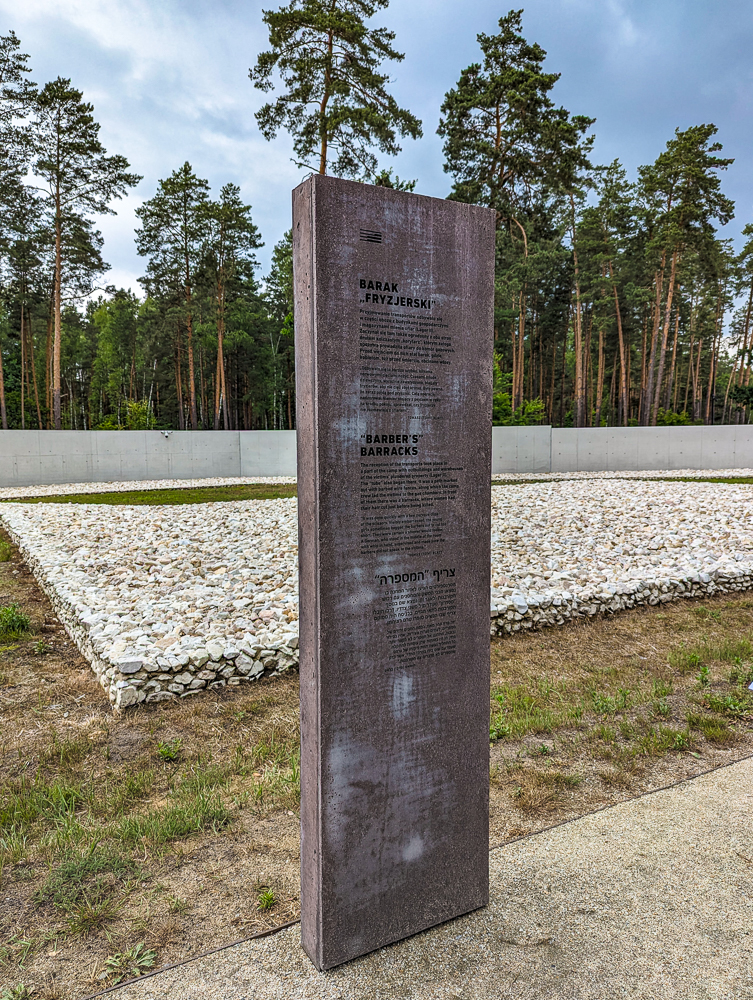
Where to stay in Lublin
Sobibór is a bit out of the way, but Lublin is still the closest major city. Here are a few suggestions on where to begin your hotel search in Lublin:
There are plenty more to choose from though. See all Lublin hotel options here.
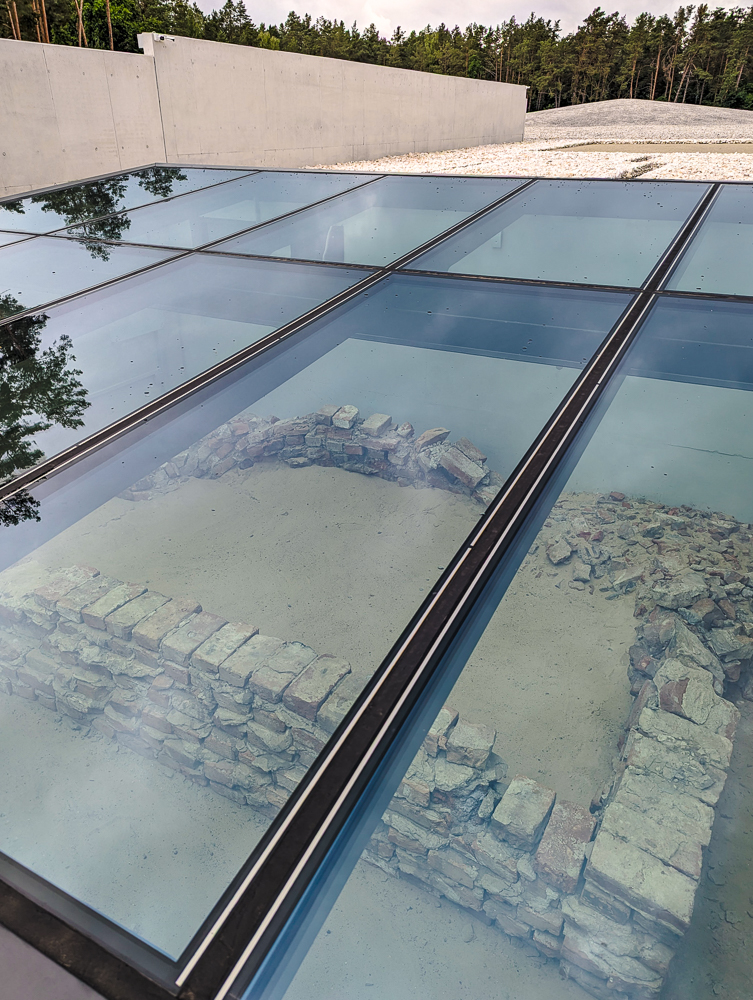
More info for your visit to Poland
- Hotels: Find great places to stay on Booking.com (my go-to). Expedia and Hotels.com are worth checking too. VRBO is best for apartment rentals.
- Rental cars: Check out the best local rental car deals here.
- For more local tours, check out all the options from Viator and Get Your Guide.
- Don’t forget a Poland guidebook and this must-have Poland customs and culture guide!
- Want more? See all my Poland posts here.
Like this post? Have questions about visiting Sobibór? Let me know in the comments below. Thanks for reading.

Save this info, pin this image:
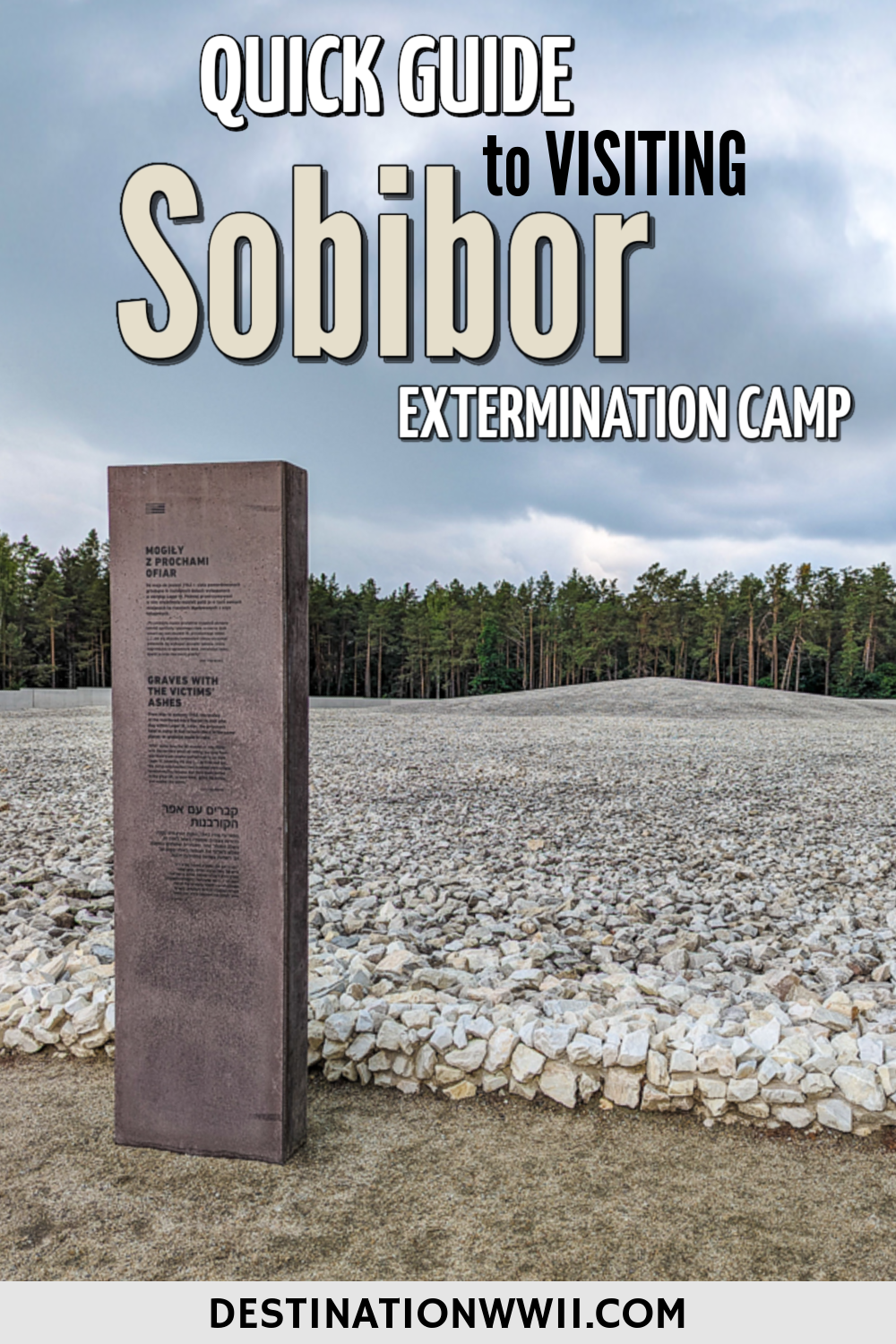

Ashley, Thank you for this very helpful distillation and summary. I truly appreciate it. I intend to try to get there during my upcoming trip. If is where my great grandma and her daughter (for whom my mother is named) were killed.
Hi Josh – You should definitely visit in that case! It’s truly moving and both the museum and the memorial spaces are very well done.